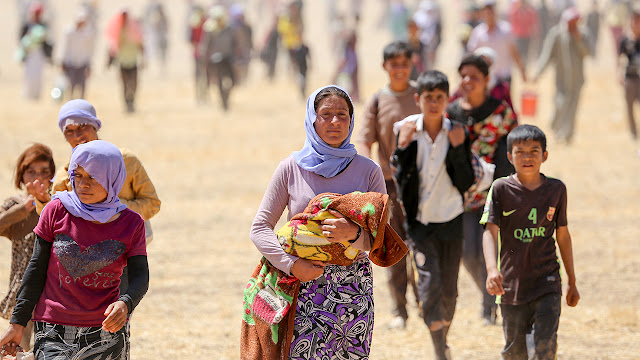TOPIC: Iraqi Military and Kurdish Militia's Clash in Sinjar
The limited peace in the northern corner of Iraq has been shattered following an outburst of violence between local militias and the military. The violence has forced at least 3,000 people to flee Sinjar and its surrounding areas, with most heading towards the semi-autonomous Kurdish region. The latest violence began when the Iraqi military initiated operations to clear the area of YBS forces, a Yazidi militia with close ties to the PKK, the Turkish Kurdistan Worker's Party. The Iraqi military stated that the operation was conducted in order to remove YBS checkpoints that undermined the states authority as well as preventing civilians from returning to their homes. As they attempted to do so, the Iraqi military came under small arms and sniper fire, whilst finding the roads heavily mined. According to a local provincial deputy, one Iraqi soldier was killed, whilst two others were reported injured. The Iraqi military also stated that at least a dozen Yazidi fighters had been killed, though this has not been independently confirmed.
A History of Conflict
The YBS militias have controlled swathes of Sinjar since 2014, when it was heavily involved in pushing Daesh (ISIS or ISIL) out of the district, in conjunction with the PKK. Prior to the fightback against Daesh, Yazidi communities had been subject to retreats, massacres and slavery at the hands of Daesh. In August 2014 Daesh captured Sinjar, following the retreat of Peshmerga forces from the area. This forced up to 50,000 Yazidis to flee in to the nearby mountainous region, in hope of reaching Dohuk in Iraqi Kurdistan. During the harsh conditions of their flight, many died, whilst those who were unable to flee were executed or enslaved, with women in particular becoming sex slaves. Daesh justified the horrors by declaring the Yazidis 'devil-worshippers'.
 |
| Yazidis fleeing Sinjar in 2014. Image Credit: Getty Images. |
Many of the women and children took refuge on nearby Mount Sinjar, a 4,600ft ridge believed locally to be the final resting place of Noah's Ark. Surrounded by Daesh and suffering from dehydration, exposure and starvation, there was a legitimate concern that the entire group could be massacred. Fortunately, 20-30,000 Yazidi women and children managed to escaped from the mountain after the Kurdish YPG and PKK intervened, opening humanitarian corridors before assisting in the fightback against Daesh.
 |
| A map demonstrating the wide spread of Turkish populations but the limited control of Kurdish self-governance. Image Credits: DW News. |
This leaves the newly armed Yazidi communities justifiably fearful of disarming themselves, especially at the behest of the Iraqi central government, who proved entirely incapable of protecting Yazidi communities during the advances of Daesh. Equally problematic is the Yazidi's friendship with the PKK, as the organisation is considered a terrorist organisation in neighbouring Turkey, who has battled the PKK since the 1980s. This has led to Turkey violating the territorial sovereignty of Iraq continuously, as it launches military operations against the PKK. Baghdad would hope to reign in these militias in the hop of dislodging Turkish attempts to consolidate its footing in the north. Previously in October 2020, Baghdad and the Iraqi Kurdistan government had signed an agreement to jointly manage Sinjar in order to restore central government control over competing local militias, but this has thus far proved unsuccessful.


Comments
Post a Comment